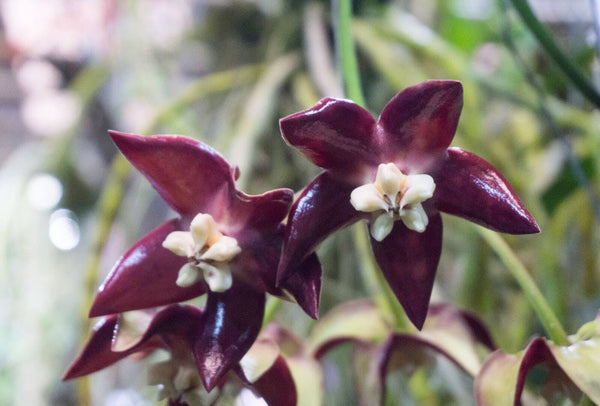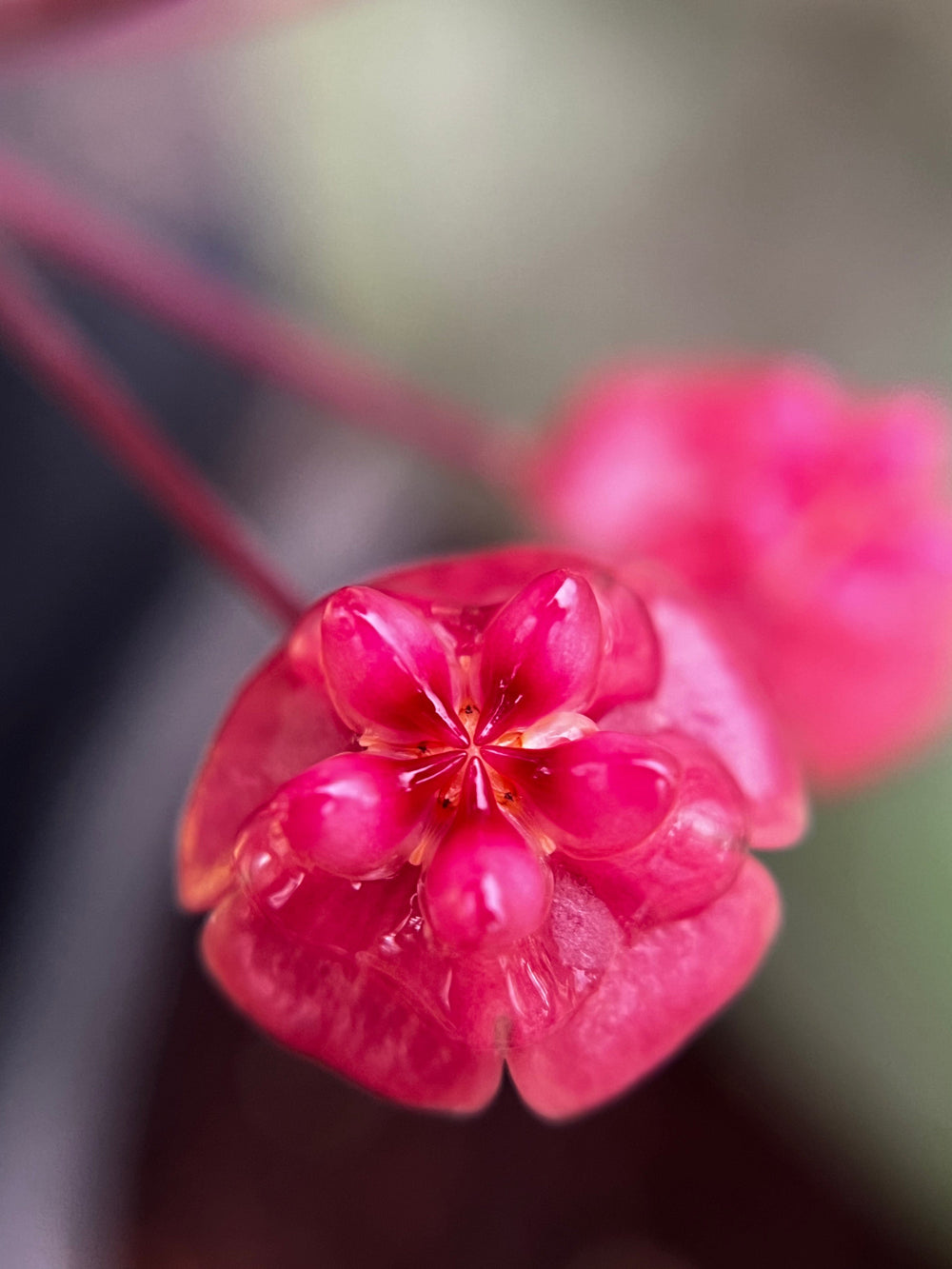Hoya Imperialis - Plant Care Guide

Table of Contents
- Light Requirements
- Watering
- Soil
- Temperature and Humidity
- Fertilizing
- How to Propagate Hoya Imperialis
- Common Pests and Diseases
- Hoya Imperialis - Toxicity to Cats
- The Bottom Line
Hoya imperialis is one of the more popular hoya types due to its beautiful blooms in the stunning shades of maroon, mauve and everything in between, often larger than what other types of hoya have to offer.
However, for impressive blooms, you need to know all the ins and outs of Hoya imperialis care. So, here’s everything you should learn before next season to ensure your Hoya imperialis flower bloom will leave your guests speechless.
| Aspect | Care Guidelines |
|---|---|
| Light Requirements | Bright, indirect sunlight; avoid excessive direct sun to prevent leaf drop. South-east and south-west facing windows are ideal. |
| Watering | Water consistently; check the top 1-2 inches of soil and water when dry. Be cautious of overwatering. |
| Soil | Well-draining mix; combine regular potting soil with perlite and orchid bark. |
| Temperature and Humidity | Thrives in temperatures between 16°C (61°F) and 24°C (75°F); prefers high humidity levels. |
| Fertilizing | Feed during the growing season with a balanced fertilizer to support growth and blooming. |
| Propagation | Propagate using stem cuttings; root in water or a moist, well-draining soil mix. |
| Common Pests and Diseases | Watch for pests like mealybugs and aphids; overwatering can lead to root rot. |
| Toxicity to Cats | Generally considered non-toxic to cats, but ingestion may cause mild discomfort; advisable to keep out of reach. |
Light Requirements
Hoya imperialis will thrive when provided with bright but indirect sunlight - conditions that resemble those it would get when growing naturally in Southeast Asia. South-east and south-west facing windows are ideal locations for it. It’s important to not overdo it when it comes to Hoya imperialis light requirements, as when provided with too much sunlight, the plant can start dropping leaves.
Watering
When it comes to watering, Hoya imperialis has slightly different requirements compared to other plants of its species - it tends to be thirstier than other types of hoyas, so it needs to be watered consistently while still being mindful of overwatering. If you’re unsure if you should water it, check the top inch or two of its soil - if it's dry, your plant needs to be watered. If it’s still wet, your plant is good and you should hold off the watering.
Soil
Just like other Hoyas, Hoya imperialis also requires a well-draining soil for best growth. While there are hoya-specific potting mixes available, you can also use a regular potting mix - however, on its own it can be a bit too heavy for your plant, so make sure to mix it with things like perlite and orchid bark to ensure better drainage.
Temperature and Humidity
Hoyas, and that includes Hoya imperialis, are plants that grow best when exposed to warm and humid conditions. They love their humidity, so opting for a humidifier might be a great idea if your home tends to have dry air. Keeping them clustered with other houseplants and switching them to a naturally humid room, such as your bathroom, might work as well.
When it comes to temperature, try to keep it on a higher side as well to ensure better growth - between 65°F and 85°F (18°C and 29°C) will be perfect. While hoyas can tolerate temperatures under that, it’s best to try and keep them within these limits, as their growth might be slowed down otherwise.
Fertilizing

Hoyas do not require frequent fertilizing. If you feed them with a balanced houseplant fertilizer diluted to about half of its strength once a month during their most intense season (spring and summer), you’ll allow your plants to take advantage of its benefits without overdoing it.
How to Propagate Hoya Imperialis
The Hoya imperialis propagation process is actually very straightforward and involves just a few steps:
- Select the right stem - Picking the right stem for cutting is essential. Look for one that has at least three nodes. Cut it using sharp pruning shears or scissors. Remove the leaves around the nodes, but leave the few at the top.
- Place your stem in water - Once you have selected your perfect cutting, you can move on to the next step which is placing it in a water-filled container so that they can grow. If you change the water weekly and ensure that it receives bright, indirect sunlight, it should start developing roots.
- Move your cutting - When you take care of your cutting properly, it will grow roots - once they reach about an inch or two, you can move it to a well-draining soil and place it in a more permanent location.
Common Pests and Diseases
Hoyas are actually pretty resistant to a lot of common plant issues, but they can sometimes be affected by bugs such as mealybugs and scale insects - especially if one of your other house plants already have issues with them. The infestation can spread fast, which is why you need to take care of it quickly before it becomes a bigger issue.
Hoya Imperialis - Toxicity to Cats
Hoya imperialis is not toxic to cats. Ingesting it might bring some discomfort to your feline friend, however, so it’s best to keep it out of their reach, especially considering they can accidentally make the pot fall.
The Bottom Line
Hoya imperialis is not that difficult to take care of, as long as you know what kind of conditions it will thrive in. As long as it gets the right lighting, is watered correctly and is grown in a well-draining soil, it should be more than fine and provide you with beautiful blossoms that will make everyone eager to ask where you got the plant from.











